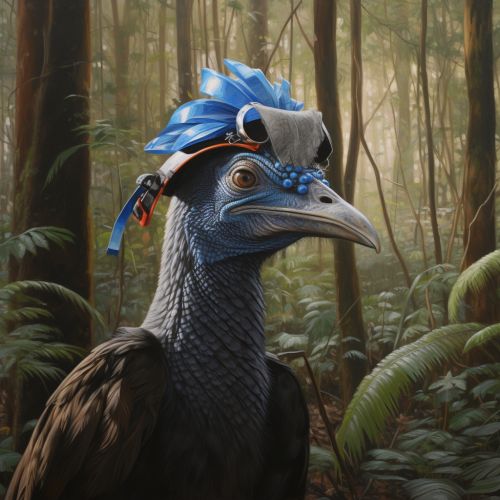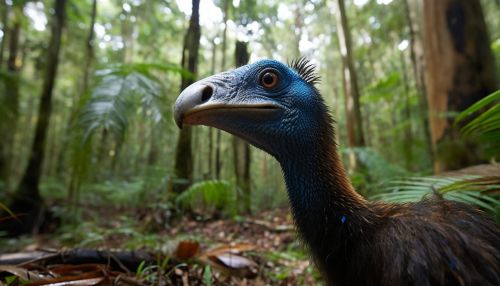Cassowary
Taxonomy and Evolution
The cassowary is a member of the ratite group of flightless birds, which also includes the emu, rhea, and kiwi. The cassowary's closest living relatives are the emu and the elephant bird of Madagascar. The cassowary's lineage dates back to the Cretaceous period, when the ancestors of modern ratites were still capable of flight.


Physical Characteristics
Cassowaries are large birds, with some individuals reaching up to 2 meters in height. They are characterized by their powerful legs, three-toed feet with sharp claws, and a distinctive helmet-like casque on their heads. The casque is made of a tough, keratinous material and may serve a variety of purposes, including protection, sound amplification, and dominance display.
Behavior and Ecology
Cassowaries are solitary birds that inhabit the rainforests of Australia and New Guinea. They are primarily frugivores, feeding on a variety of fruits and berries, but they will also consume small animals, insects, and other plant matter when available. Cassowaries play a crucial role in their ecosystems as seed dispersers, helping to maintain biodiversity in their habitats.
Reproduction
The breeding season for cassowaries typically begins in May or June. The male builds a nest on the ground, where the female will lay her eggs. After the eggs are laid, the male takes on the responsibility of incubating them and caring for the chicks once they hatch.
Conservation Status
Cassowaries are currently listed as vulnerable by the IUCN. Habitat loss due to deforestation and human encroachment, along with vehicle collisions, are the primary threats to their survival.
Cultural Significance
In the cultures of New Guinea, cassowaries are revered and play a significant role in various myths and rituals. They are also an important source of food and their feathers are used in traditional clothing and ceremonial items.
